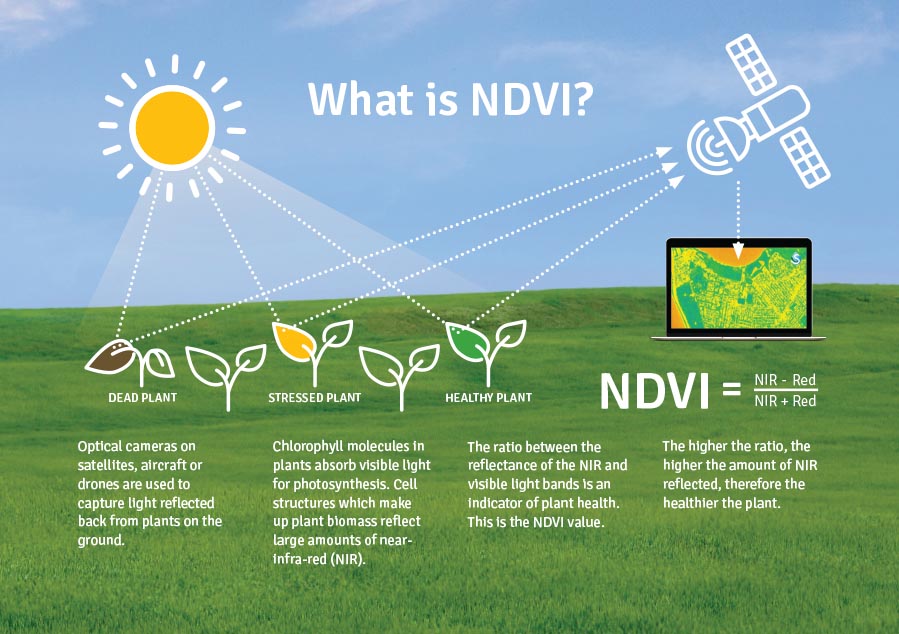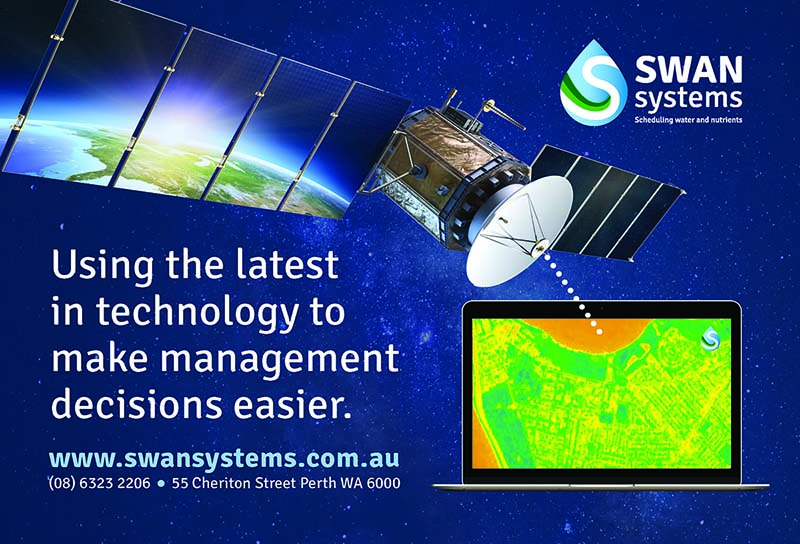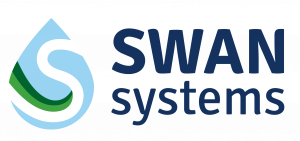SWAN Systems: More Than Just Irrigation Management Software
Article appeared on The Overflow by Irrigation Australia, Summer 2018 Edition
Optimise nutrient management and monitor plant health
Last edition (Spring 2017) we reported on how Sports Turf Technology, along with the City of South Perth, were trialling SWAN Systems on the poorly drained Sir James Mitchell Park on the South Perth foreshore, and a sandy, well drained sports field on the eastern section of Collier Reserve. The trial is still underway and we are anticipating analysing the results in the coming months. The focus of the current article is to describe two exciting new features of SWAN that will make it
the “go-to” system to manage your irrigation setup. Before we go any further though, a quick review of the SWAN Systems irrigation module and what it does.

SWAN Irrigation
SWAN Systems (SWAN – Scheduling Water and Nutrients) is an online software service which automatically collects local daily weather observations from the Bureau of Meteorology (BoM), DPIRD and other sources, and data from on-site equipment such as flow meters, controllers and soil moisture probes. SWAN analyses each weather update and irrigation event to provide a daily assessment of soil moisture status along with a snapshot of each site’s water usage. This
allows continuous tracking of site irrigation status and of budgeted versus actual applications.
SWAN uses crop- and soil-specific models to predict future water use and soil moisture status, providing irrigators with effective insights to make daily, weekly and seasonal water and nutrient management decisions. Using SWAN allows for dynamic management to ensure provision of the right amount of water and nutrients for plant growth given recent management, weather history, and the immediate forecast. The use of crop- and site- specific modelling means SWAN is applicable for managing any irrigation project, whether it be turf in public open space and sportsgrounds, stock feed pastures, or fruit orchards.
SWAN Nutrients
- The Nutrients component of SWAN Systems is a management platform designed to provide the following functions:
- Manage planned and actual fertiliser application for individual sites or groups of sites.
- Quantify (in order to manage) loading to the environment of nutrients and contaminants that occur in the background water and fertilisers.
- Store water quality test results.
- Manage the procurement of fertilisers.
- Facilitate budgeting of expenditure on fertilisers.
It can be used in conjunction with the existing irrigation module or as a stand alone module. By incorporating the Nutrients module into SWAN Systems users will have together in the one place information to streamline management and work practices. In addition to these benefits, using the Nutrient module will reduce wastage, minimise leaching and track fertiliser inputs.
The ability of the Nutrient component of SWAN Systems to track the nutrient loading of background water is a feature we are very excited about. This has clear benefits for recycled/reclaimed water projects, and also for any fertilised fields where savings can be made by considering background water nutrient load. For example, during concept trials we have been able to save 15-25{e2170435bff7bc9d685b57a9836e1d3767841e17d69d60765c5a74d18f9d9943} of potassium applications and even more for calcium,depending on the water source used. In
addition the ability to set trigger levels for any analyte means the user will be notified if any potential contaminants in the water reach reportable levels.
SWAN Health Index
A new feature of SWAN Systems for 2018 is the “Health Index”. This is an integrated, location-based visual check of crop health, such as high resolution normalised difference vegetation index (NDVI) imagery. Satellites and potentially drones can provide your “eyes-in-the-sky” for monitoring of possible issues not readily visible from the ground.
NDVI imagery is gaining popularity amongst agriculturalists, horticulturalists and turf growers. Traditionally NDVI analysis has been conducted using satellite imagery of the area in question. With the advent of affordable high resolution, compact drone cameras, and improvements in the resolution of satellite imagery, monitoring plant health from above is now an option for many growers.
The science behind NDVI is relatively straightforward (See: What is NDVI? diagram). Visible light from the sun is reflected off vegetation and is captured by drones or satellites equipped with NDVI image sensors. The ratio between the red band of visible light and the near infra red (NIR) band provides an indication of plant health. A healthy leaf will reflect back higher amounts of the NIR band compared to the red band of light.

The SWAN Health Index module will allow you to set target health index values, analyse the NDVI inputs and graphically present this data over a specified time period. This gives a detailed, site-wide picture of the health of the irrigated area over time. If the index is not within the target range, then further investigations as to why the crop is performing poorly can be carried out.
Currently, much research is being conducted into the spectral analysis of plant health, looking at the relationships between NDVI and water status, disease pressure, nutrition status (particularly nitrogen), and crop biomass. SWAN Systems Health Index will compliment this body of work by providing a platform that enables monitoring of specific areas, which will enable managers to focus on sites or areas where the health index indicates a problem.
Summing Up
SWAN Systems is more than just irrigation management software. It is a complete management solution. By integrating the irrigation, nutrient and health index modules, users will know they have all the information they need to make informed decisions enabling them to get the most out of their water and nutrient applications.





